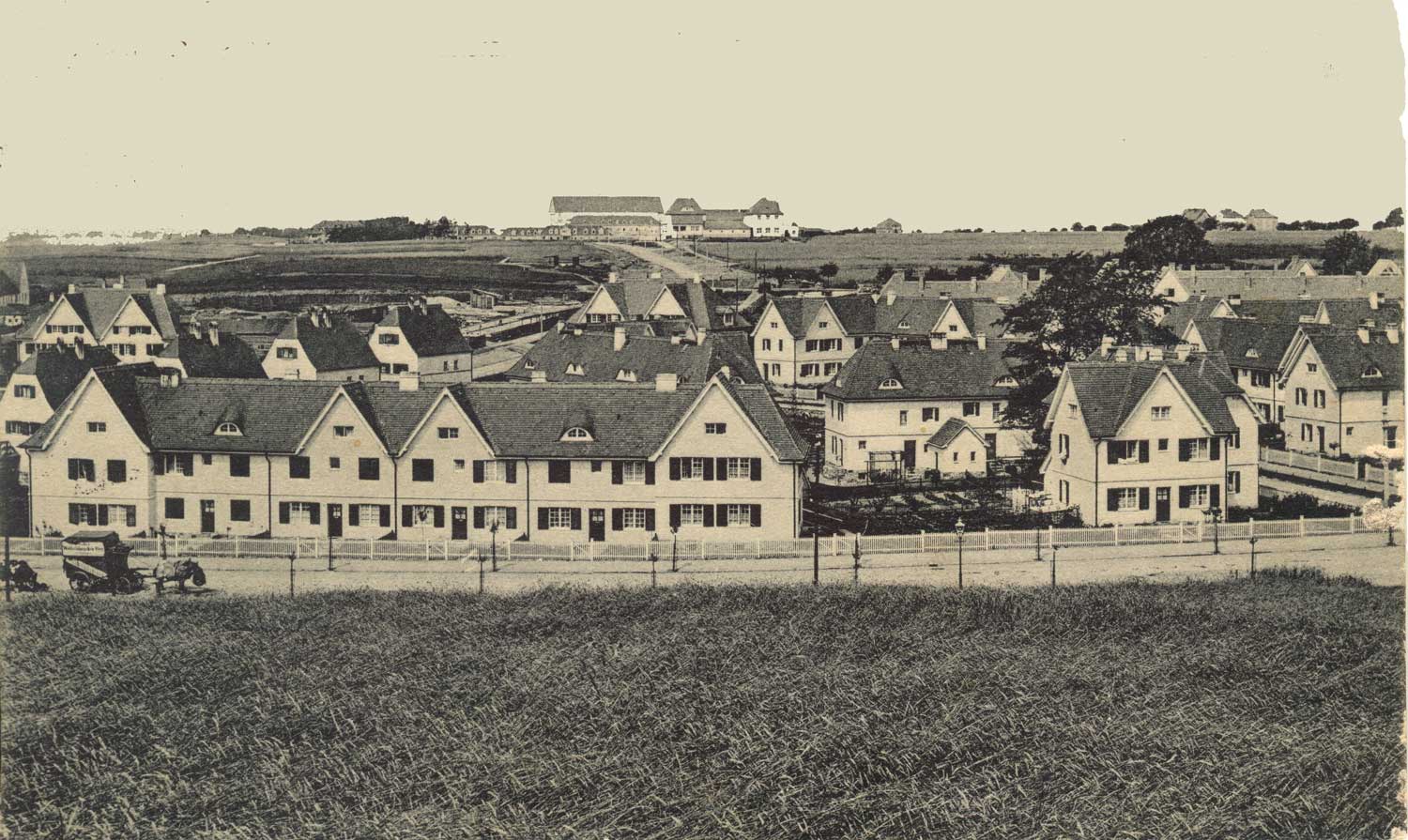The first homes on the housing estate
Right from the beginning, the intention was to enable low-income earners to live with affordable rents on a small housing estate and to sell building land to higher-income earners with a country house estate, thereby ensuring a social balance in the acquisition of land.
First of all, it was important to develop the site, including planning public transport links to Dresden and preparing utilities for the daily needs of the new residents. Construction of the garden city began in 1908. By 1913, 387 houses had been built and Hellerau had taken on its distinctive shape.
Content of this article

The street Am Heiderand.
Architect: Richard Riemerschmid. Private collection Siegfried Bannack.
Organisation of social balance
The first development concept by Richard Riemerschmid from 1906 already shows the strategic intention of the founders of Hellerau to enable low-income earners to live with affordable rents on a small housing estate and to sell building land to higher-income earners with a country house estate, thereby ensuring a social balance in the acquisition of land.
The entrepreneur Karl Schmidt, the managing director of the newly founded Deutscher Werkbund (German Association of Craftsmen) Wolf Dohrn and the architect Richard Riemerschmid founded the Gartenstadt Hellerau GmbH in 1908 and shortly afterwards the Baugenossenschaft Hellerau GmbH. They wanted to provide an organisational structure for the sale of the land and construction of buildings with these two companies. First of all, it was important to develop the site, including planning public transport links to Dresden and preparing utilities for the daily needs of the new residents.
Hellerau grows – the first houses are built
The foundation stone for Hellerau Garden City was laid in 1909. Initially, 345 small homes were built based on plans by Richard Riemerschmid, Heinrich Tessenow, and Hermann Muthesius, mostly as single-family homes for factory employees. The first small homes were built on Am Grünen Zipfel. The annual rent for these simple terraced houses designed by the architect Riemerschmidt was between 250 and 380 German marks for homes between 46 and 85 m² in size. The majority of the tenants were quality workers and employees, because they could afford this rent. Next to the factory premises on Moritzburger Weg, the semi-detached house of Karl Schmidt and Georg von Mendelssohn was built, connected by an archway. These buildings had been planned as country houses. The residential house for Emile Jaques-Dalcroze on the street Auf dem Sand was also built in this style. The Waldschänke, formerly the only estate in the area, was remodelled in the style of reform architecture.
Between 1910 and 1912, the Am Grünen Zipfel development was completed, as was the estate with small homes designed by Hermann Muthesius on the streets Am Gräbchen, An der Winkelwiese and Am Dorffrieden. In 1913, 387 houses had been built and Hellerau had taken on its distinctive shape. The high architectural quality of the planning was supervised by a specially appointed building and art commission. Its members included some of the most important artists and architects of the German reform movement.
